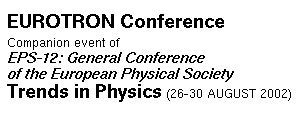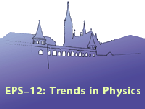 |
 |
 |
The overriding strength of m SR, a generic acronym for muon spin relaxation, rotation and resonance techniques, is that it is a uniquely sensitive probe of extremely small magnetic fields and the distribution and dynamics of such magnetic fields within a sample, both in zero and applied magnetic field. Indeed the sensitivity of m SR is such that fields generated by nuclear moments are easily measured, whilst the dynamical response (10-12-10-4 s) serves to bridge the gap that separates, for example, neutron spin echo methods from the bulk measurements of magnetization and susceptibility. The field dynamics measured by the muon can be related either to intrinsic internal field fluctuations, or to the apparent fluctuations caused by a muon diffusing through a lattice. The latter case is often of key interest, as the muon itself behaves like a light isotope of hydrogen (Mm =1/9amu) and therefore can be used to probe hydrogen-like diffusion processes.
The unique sensitivity of m SR has secured its role as an indispensable and increasingly important tool in the armory of the condensed matter scientist. Over the last decade the extremely successful and often pioneering exploration of phenomena as diverse as spin glass dynamics, spin fluctuations in itinerant electron systems, magnetic ordering in ultra-small moment systems, critical dynamics, flux distribution in superconductors, hydrogen mobility, passivation in semiconductors, muonium formation and dynamics in proteins and, more recently surface and near surface effects, has provided a testimony both to the wide applicability of muon beam techniques and to the breadth of the muon beam user community.
Europe is particularly fortunate to host two major world-class muon facilities, namely PSI in Switzerland and ISIS in the UK. In this presentation I will briefly revue the impact of the muon beam research performed at these facilities, and also extrapolate beyond existing facilities and capabilities to what the proposed European Spallation Source might be able to offer muon spectroscopists in the future.
The following files are available:
- symp1cywinski.pdf [10897 bytes]
- symp1cywinski.doc [40448 bytes]
Eurotron Conference is supported by European Commission, High-Level Scientific Conferences